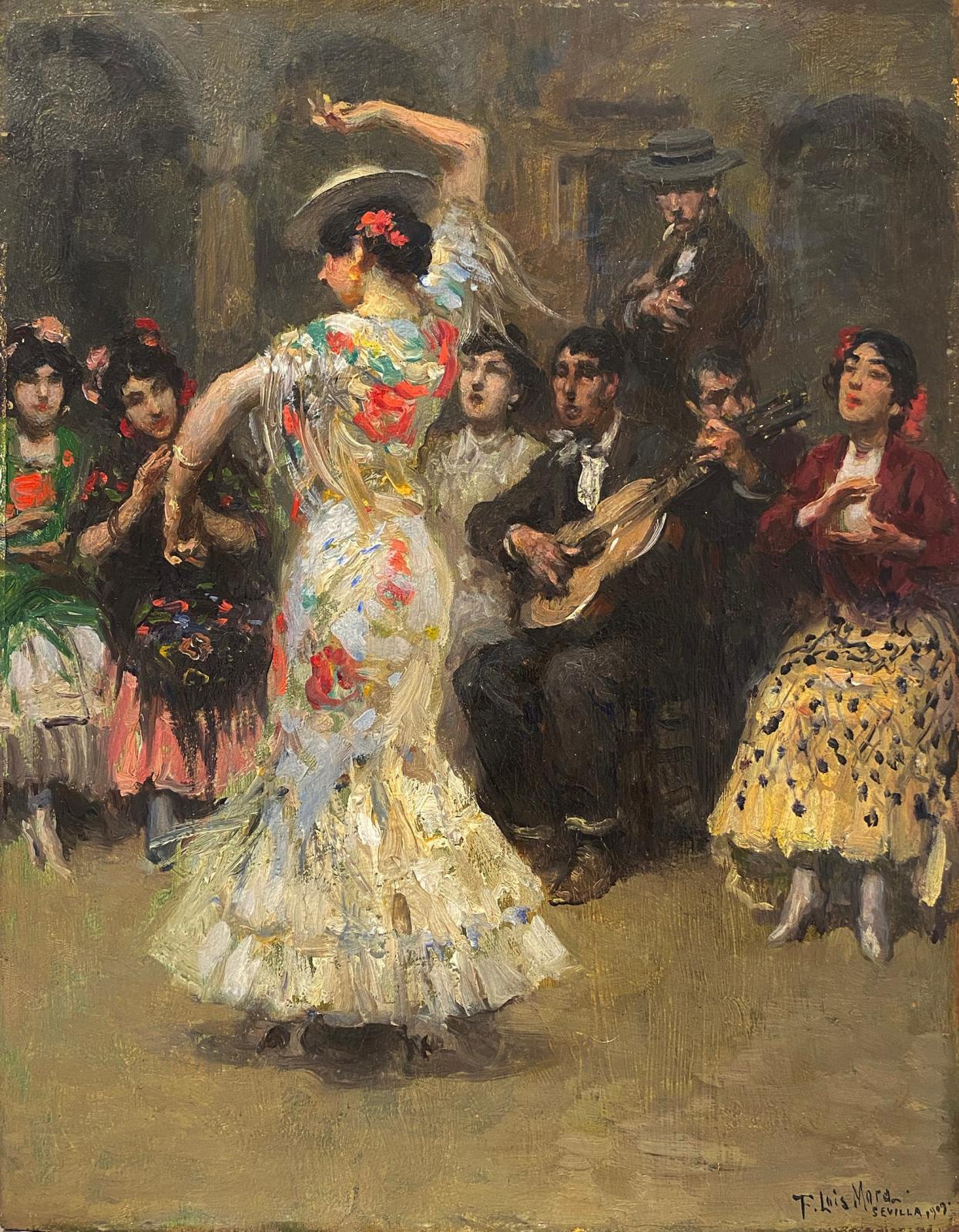







Framed: 18 1/4 x 16 1/2 x 3 inches
artist
Born in Uruguay in 1874, his family moved to America when he was a child. His father, Domingo Mora, was a well-known Spanish artist who gave his son his early artistic training. Mora also attended the Boston Museum of Fine Arts School where he studied drawing and painting under Frank Benson and Edmund Trabell. Later he studied under H. Siddens Mowbray at the Art Students League in New York City.
As did most promising artists of the time, Mora traveled to Europe to study the great paintings of the Old Masters. The influence of the Spanish Masters, especially Velazquez, is evident in Mora's choice of subject matter and style throughout his career. "Perhaps it is these very conflicting conditions in the life of Mr. Luis Mora that have evolved the unusual quality of his art, an art essentially Spanish in subject and feeling and wholly modern and American in expression (Craftsm, 17:402)."
Over two hundred of Mora's sketchbooks are conserved at the Archives of American Art. The particular sketchbooks from which the exhibited drawings are derived can be dated back to the early 20th century when Mora resided in Gaylordsville, Connecticut, New York City, and briefly in Carmel, California. Mora was also commissioned to paint the portraits of Andrew Carnegie and President Warren G. Harding, both of which hang in the White House.
Description
Mora’s life-long artistic goal was to adapt the techniques of the Spanish Old Masters into American modern painting. In fact, Mora would be referred to as one of the American painters who would return, over and over, to Spanish influences and subject matter in his paintings. Mora frequently traveled to Spain to visit his extended family, and to paint. Mora made a trip to Europe around 1908 after he married and he and his wife stayed a little over a year in Europe, primarily in Spain.
On this particular trip, Mora met Joaquín Sorolla y Bastida. It is evidenced in Mora’s work that he would have been impressed with this great virtuoso’s brushwork and use of light within his Impressionist aesthetic. In this interior scene, Mora captures a Flamenco Dancer from Seville, the birthplace of Flamenco, in motion, while the spectators look on in their authentic garb. The fluidity of the brushstrokes combined with the dark receding background creates a mysterious atmosphere charged with passion. This sentiment is especially felt as the gentleman hanging back, with his hat shading his eyes, generates another layer of intrigue.
Mora did many small works during his time in Spain that he could pack up and bring home. However, this work was acquired in Spain and made its way to America in the trunk of the great architect, Rafael Guastavino III. Guastavino had the painting shipped from Barcelona in approximately 1909. Upon returning to the United States with his three Francis Luis Mora paintings on panel, Guastavino took them to one of the best framers in New York. Today, the painting is in the same frame with the original patina. Every once in an awhile, there is a work of art where you can feel the history of its travel and the permanence it had in a family’s home.
provenance
Rafael Guastavino III, purchased in Barcelona while on a trip there in 1909
Private collection James Black, Florida by inheritance







